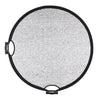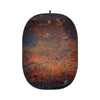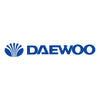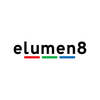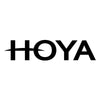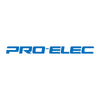Food Photography for Food Bloggers: Natural vs Artificial Lighting
Every food blogger wants to take compelling photographs that show their creations at their finest as food is a major topic of interest on online platforms such as Instagram. Food photography is an art as it doesn't rely primarily on cooking or baking skills, as it also includes presentation skills. Presenting food items and the surrounding setup can make for more alluring photographs, but lighting is a crucial factor in ensuring you capture the most flattering images that your audience reacts to.
A well-lit setup can become the difference between a mediocre and stunning image, so food photographers need to carefully weigh their lighting options and decide what effect they are aiming to achieve with their lighting setup and how they want the final image to be turn out. The first step to perfecting lighting involves making a tough choice between natural or artificial light. If you're having trouble deciding your lighting style, let us break down the benefits of each type so you can determine the best option for your setup.
Natural Lighting vs. Artificial Lighting
As the name suggests, natural lighting originates from a natural source such as the sun or moon, and it is a softer form of warm and yellow-toned or white lighting dependent on the time of day. Artificial lighting is created from a manufactured light source that can be continuous or flash and includes electric lighting, studio flash lights, fluorescent lights, and LED lighting. This lighting also creates different heat signatures depending on the source, and the light effects can range from blue and cold to red and hot.
Advantages of Using Natural Lighting
This lighting is readily available and does not need to be recharged or use a power source, so you don't have to look for an extension cord if you are photographing food in your kitchen or outside in the garden. This makes it possible to shoot in multiple locations without worrying about searching for power outlets or battery life.
Additionally, it does not require any monetary investment as it is free of charge, which saves you from the headache of buying expensive lighting equipment along with modifiers. Even the lighting accessories used with natural lighting are much cheaper than their artificial light counterparts, such as softboxes and diffusers, as you can get away with using simple hand-held reflectors which can produce different coloured lighting effects and remove any unwanted shadows by providing targeted lighting.
Another concern avoided by using natural light is the food items don't spoil easily during the shoot as natural light is not as hot as artificial lighting. Studio setups are usually in closed spaces that require proper ventilation to maintain a cool set as the continuous lights, especially tungsten filament and fluorescent lights, can make it especially hot, and as they are directly pointed at the food item, it can make the end result look less appealing especially if the pictures are taken at a later point in the shoot.
Natural lighting is a no-frills lighting option as you don't have to dive deep into the technical side of lighting and understand different lighting options and decide between them by evaluating the pros and cons of light duration, intensity, heat signature, and other related features that effect lighting. Natural lighting requires only a camera and sun or moonlight, and this simplicity is also reflected in the photography as it does not produce a highly staged result and adds a level of authenticity that pairs well with the minor imperfections and rustic feel of food photography.
Advantages of Using Artificial Lighting
This lighting is much easier to control than natural lighting, which constantly fluctuates, especially if you are shooting on a cloudy day that interferes with light intensity and does not allow for lighting consistency throughout the shoot – you might find one picture is overexposed while the other is underexposed even if they were taken within seconds of each other.
This problem can be easily avoided using artificial lighting as it provides a stable lighting source powered by batteries or a power source, and you can use diffusers and modifiers to achieve a softer or brighter effect depending on what you're looking for so you can shoot images at your desired optimum lighting setting. This ensures your food is more evenly lit, and you can have multiple photographs at different angles with similar lighting so you can easily select your favourite.
Using artificial lighting for your shoots can also save you precious time as you don't need to find the light constantly. During the day and night, the sun or moon's light changes direction, and you might find that it is in the right position for only a fraction of your shoot time and as food items do not stay as fresh or look as appealing as when they are first made, time is of the essence as you can't wait to delay the shoot till the next day. Artificial lighting provides a time-saving option as the studio setting provides consistent lighting for the shoot's duration and can be fixed in position, so the resulting images are always flattering.
Artificial Lighting Kits
Building the correct collection of equipment for Food Photography may be tricky, as knowing what lighting, modifiers, stands etc best suit your style of photography may become confusing. With this in mind, we have created a few options that are perfect for Food Photography:
GLOWPAD Food and Beverage Photography Complete Lighting Kit
This GLOWPAD Complete Food Photography kit has designed to enable you to take high-quality, Professional-looking photographs of food and beverages for use on websites and social media platforms such as Facebook, and Instagram with the greatest of ease. Perfect for food photographers who want to get their get stuck into the world of food photography.


GLOWPAD Food And Beverage Photography Complete Lighting Kit
DAYLiTE60D MKII Food Overhead Photography Lighting Kit
The DAYLiTE60D MKII Food Overhead Photography Lighting Kit is an easy-to-use affordable solution for people who want to get started in the world of food photography with continuous lighting and achieve professional Overhead Photography. Perfect solution for people who want to get started in the world of food and beverage photography, that are on a shoe-string budget.

DAYLiTE60D MKII Food Overhead Photography Lighting Kit
LUMI II 400 Single-Light Food Photography Kit
The PiXAPRO LUMI II 400 Single-Light Food Photography Kit is an affordable solution for people who want to get started in the world of food photography using studio strobes.

LUMI400II One Light Setup Food Photography Studio Flash Lighting Kit
To see the entire range of Food Photography kits, please click here.
The Verdict
There are merits to using both natural and artificial lighting, but the final decision comes down to your time constraints, preferences, and photography style. Lighting is an important component of any shoot, but the skill of using lighting to produce exquisite images lies with the photography, so feel free to experiment and figure out which lighting type you are more comfortable with.

























































































































